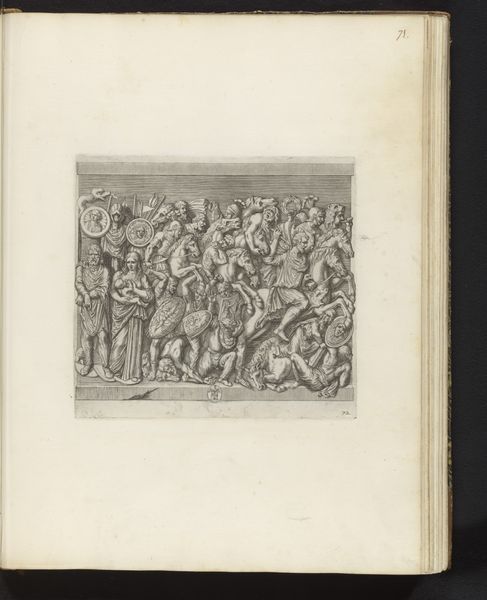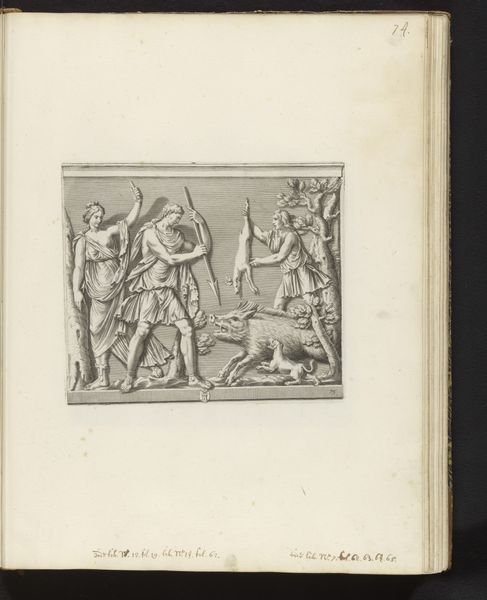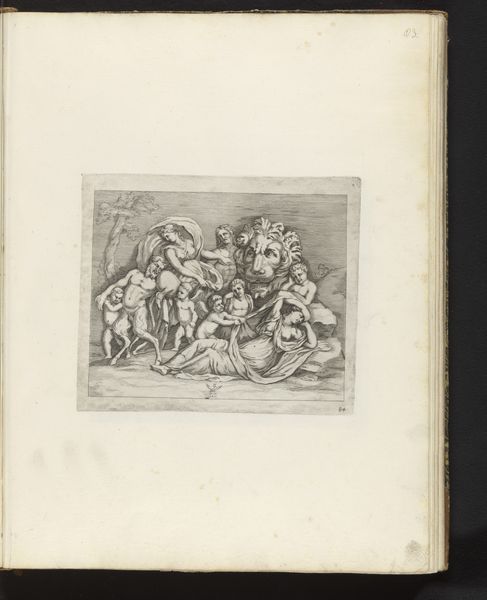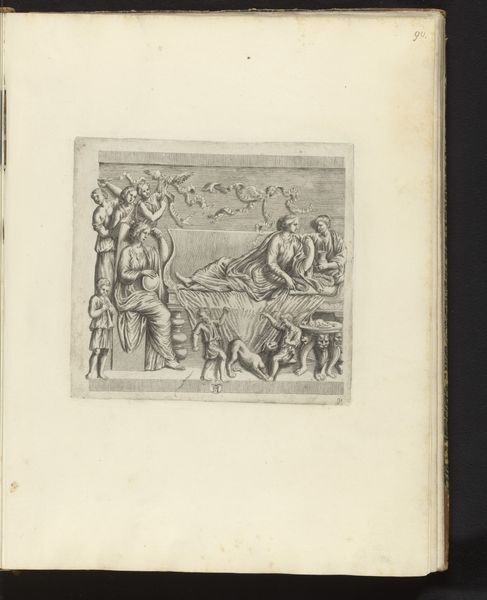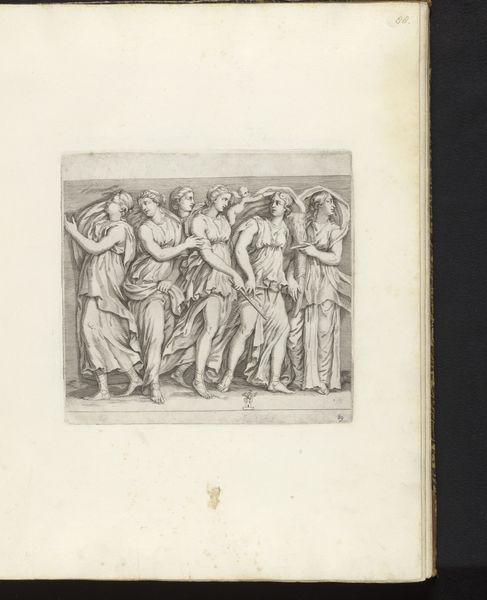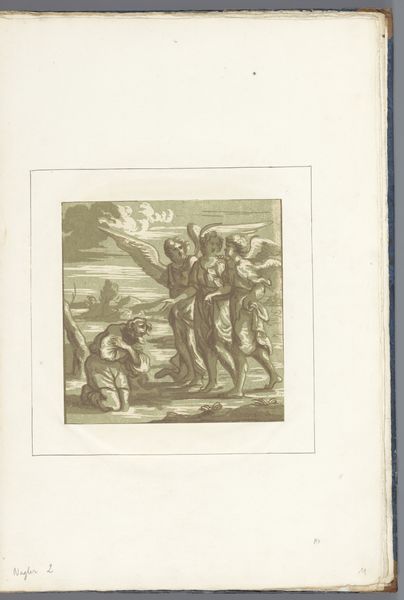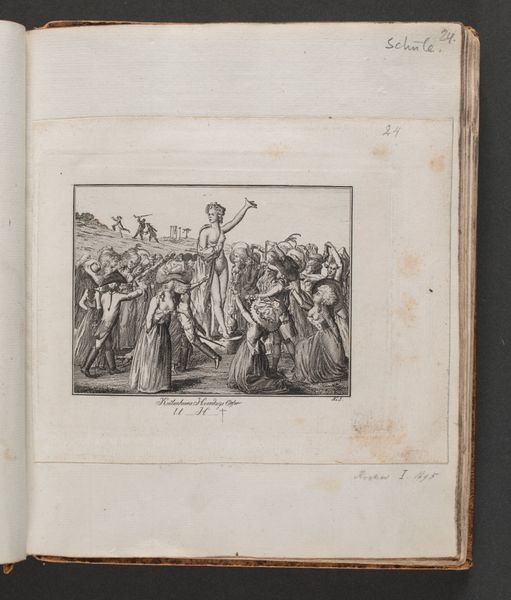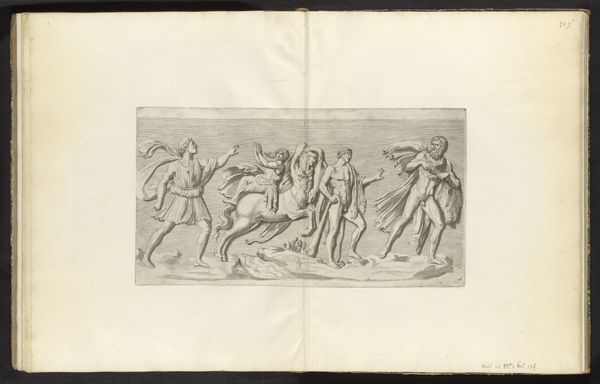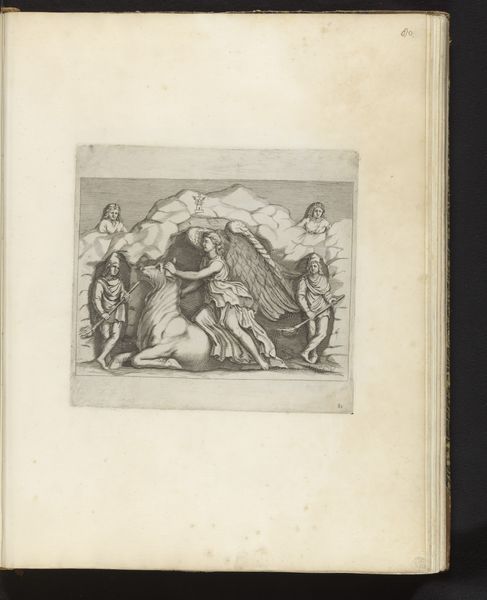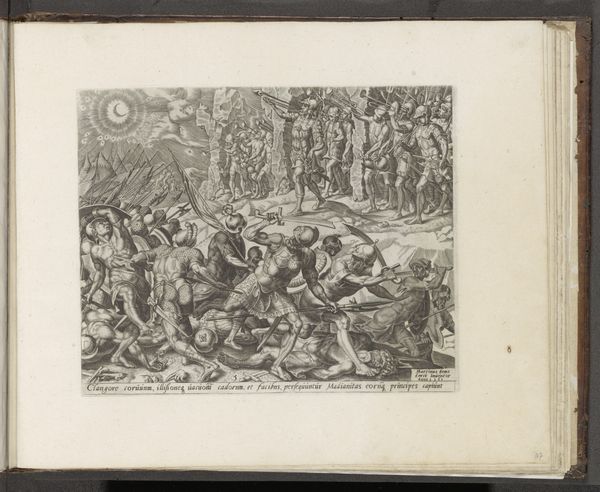
print, engraving
#
baroque
# print
#
landscape
#
figuration
#
history-painting
#
engraving
Dimensions: height 225 mm, width 239 mm
Copyright: Rijks Museum: Open Domain
Curator: Welcome. Today, we'll be looking at "Bas-relief met bacchanaal," an engraving dating back to between 1636 and 1647, created by Valérien Regnard. It's a depiction of a bacchanal scene, rendered with incredible detail. Editor: My initial feeling is... playful chaos! A tumbling throng of figures, grapes galore, definitely not your polite tea party! It makes me think of late summer, sun-drenched laziness and a touch of wildness. Curator: That "wildness," as you put it, is central to understanding these bacchanals. They were celebrations, often depicted in art, honoring Bacchus, the Roman god of wine, fertility, and theatre. However, beyond simple revelry, these events were spaces where social norms could be temporarily suspended. Consider who had access to public expression and spaces at this time; the suspension of decorum perhaps offered glimpses into broader social desires. Editor: Exactly! There's a feeling of liberation in their abandonment. Did someone say suspension of decorum? The artist is skilled. Look how he manages to imply depth within what is, in essence, a shallow plane, much like a sculpture carved in low relief. The lines buzz with energy, giving life to this little snapshot of Dionysian madness. Curator: Indeed. Regnard’s choice of printmaking as a medium further democratizes access to this image and idea. Unlike paintings accessible to only the elite, prints could circulate more broadly, sparking discussions – and potentially dissent – regarding cultural norms and the performance of identity. Editor: It's curious to see such an unruly scene contained within a classical composition and rendered with such precision. Makes me wonder if the artist himself secretly longed for a wilder life, or perhaps he simply understood its potent appeal to a wider audience. Is this an outsider observing a spectacle, or a participant trying to remember the details afterward? Curator: That tension is what makes this piece compelling. It allows viewers across centuries to engage with historical constructs of transgression, prompting us to consider the spaces where social boundaries are blurred. The enduring fascination with the "Bacchanal" suggests a continued interrogation of control and catharsis, a subject deeply embedded in the foundations of modern Western cultures. Editor: Well, that certainly gave me something to think about! I think I need a glass of wine...for artistic reflection, of course. Curator: And perhaps a touch of rebellious questioning to accompany it? Thank you for joining me today.
Comments
No comments
Be the first to comment and join the conversation on the ultimate creative platform.
